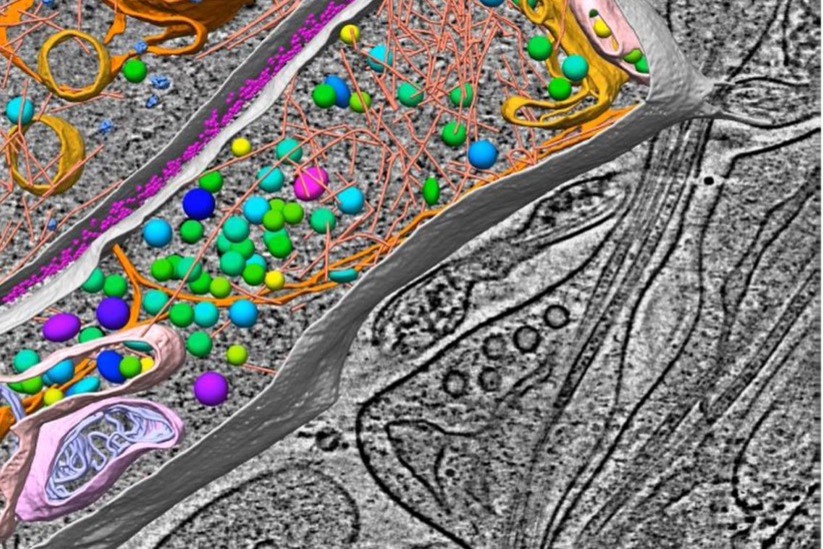Our center's impact
Why it matters
Our work will expand the scientific understanding of the workings of a cell far beyond what experiment or theory/computation can do alone. The results will be a new paradigm of how whole cell behavior can be understood in unprecedented detail and how we teach quantitative biology of the cell.

With our academic and government partnerships, as well as our connections with industry partners NVIDIA and Abberior Instruments, we’re ready to make the most of the new developments, instruments, and techniques that will come out of our center.
We’ll alert the general public through community programs. Our educational video game “LM to Minecraft” begins with cell tomograms and reconstructions. We’ll share results with the scientific community and industry through online repositories and workshops.
We’re planning several future publications about how to assemble the entire cell for simulations, including how to avoid clashes, how to walk through the cell even when all particles are present, in such a way that the viewers can obscure or push aside objects that block their field of vision. This will enhance simulations of the cell, membrane, and cytoplasm.
In addition, NVIDIA Omniverse simulations will allow us to improve the scenes for the Minecraft scenarios and output them back into the appropriate Minecraft format.
The ability to model cellular processes will be of great importance to scientific knowledge and provide value to society. The four-dimensional models of the whole cell, designed to be easily modified, will serve as tools to predict responses to the environment and mutations. They can also help researchers examine drug-binding specificity, and can reflect variations occurring in populations of healthy cells as a reference for transitions to diseased cells.
Our work may affect areas such as human health, evolution, production of important chemicals, and photosynthesis. Combining these unique imaging and GPU-accelerated computing approaches to simulate whole cells, their subcellular dynamics, and chemical composition can lead to novel and durable scientific insights.
